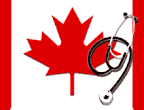 Originally designed as a feeder school for the University of Toronto, York University has managed to break away, except when it comes to medical students who are still forced to leave after completing their undergraduate degrees.
Originally designed as a feeder school for the University of Toronto, York University has managed to break away, except when it comes to medical students who are still forced to leave after completing their undergraduate degrees.
According to York University’s mission statement: “We promise excellence in research and teaching in pure, applied and professional fields.”
Since York’s founding in 1959, however, a strong emphasis has been placed on the arts and fine arts, while future doctors have moved on to other schools for further education.
Canadian universities do not have enough medical schools to keep up with the growing need for professional doctors.
Only four medical schools have been created in Canada since 1959, and only one since 1968. During this same time, the population of Canada grew 178 percent from 18 million to 32 million.
According to the Canadian Medical Association Journal, the average general practitioner in Canada works 51.4 hours per week.
From 1979 to 2003, the average Canadian workweek dropped from over 34 hours per week to around 33 hours per week.
Despite doctors working over 50 hours per week, many Canadians still have a hard time trying to find family doctors and wait times at hospitals have increased dramatically.
Meanwhile, Canada has seen a reversal of the brain drain of the mid 1990s, which saw its peak with around 1.5 percent of Canadian doctors leaving Canada to work in the United States, according to the Canadian Institute for Health Information.
Fortunately, 2006 was the third year in a row that saw a brain gain, with 238 doctors returning from abroad and only 207 leaving.
This only represents 0.05 percent of Canada’s 62,307 practicing physicians, which is not nearly enough of an increase to significantly affect hospital wait times, overworked doctors or the lack of family physicians.
The average age of doctors in Canada continues to increase, reaching 49 in 2006, with only 23 percent of doctors in Canada being under 40 and 19 percent being over 60.
The need for young doctors has never been greater, and in order to fill this need Canada needs more medical schools.
Most of the schools York competes against, including the University of Toronto, McMaster University, the University of Western Ontario and the University of Ottawa, all have quality medical schools.
York has managed to compete with and often surpass the big established programs with its business and law faculties, now it needs to do the same with a medical school.
After all, shouldn’t an interdisciplinary university strive to give their students everything that is possible, instead of simply taking the easy route and sticking to what they know best?
Source: Excalibur
Wednesday, January 2, 2008
York University needs to improve Medical Education
Posted by
Guy Derla
at
4:45 PM
![]()
Tags: Canada, Canadian health care, Doctor, family doctor, Medical education, Ontario, physicians, U.S. Canadian Institute for Health Information, York Universtity
Subscribe to:
Post Comments (Atom)


No comments:
Post a Comment